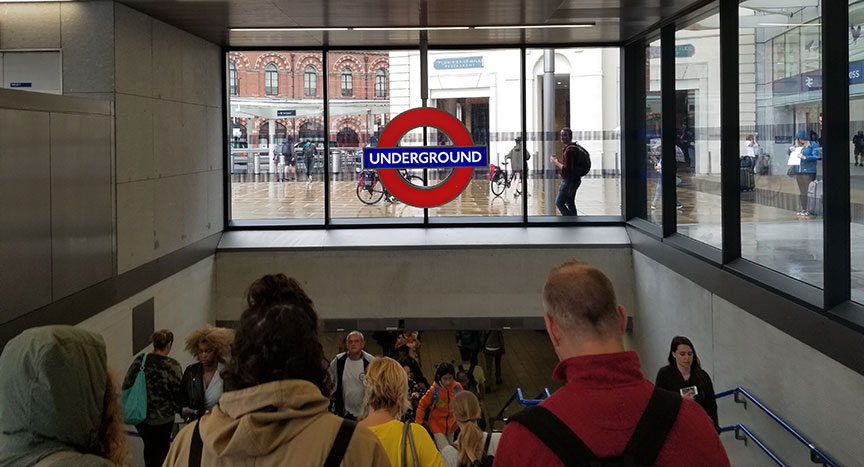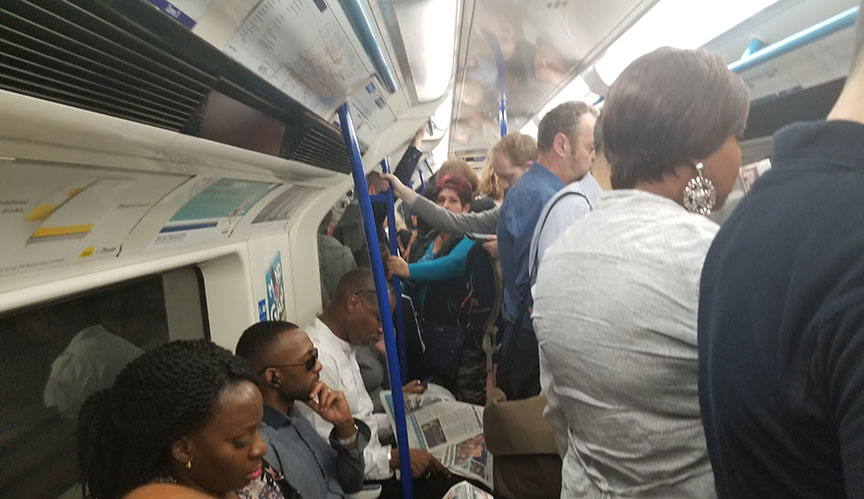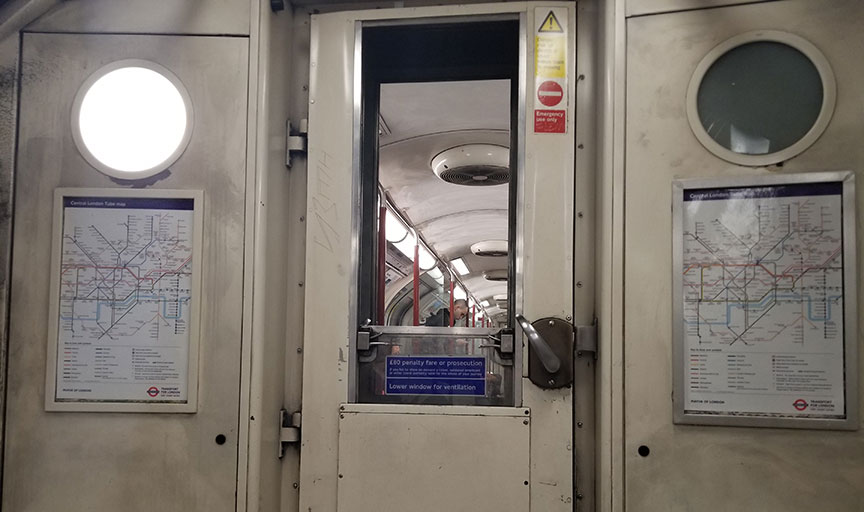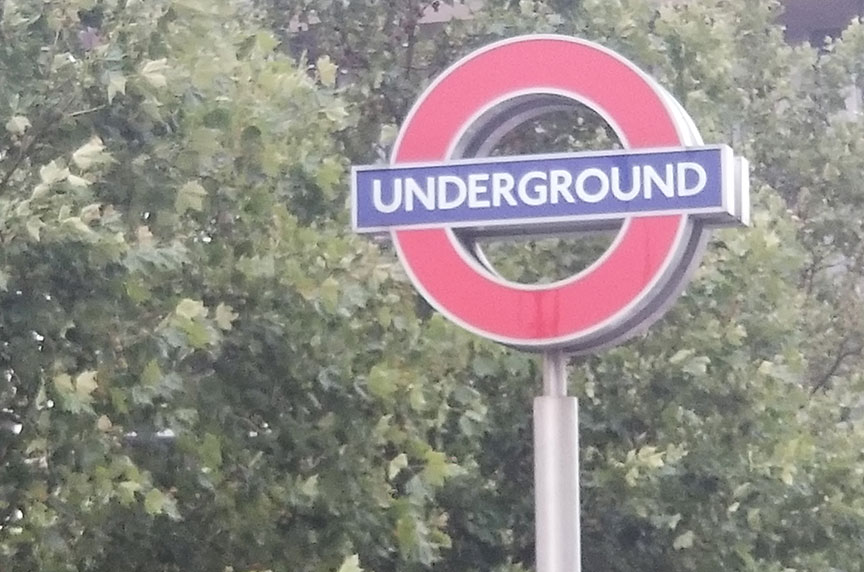- An entryway into the Underground at King’s Cross Station.
I was attempting to go to the Camden area, with the majority of our group, when my fear of missing a train all by my lonesome became a reality.
The Tube gets packed with people. It gives that same kind of “oh, no” feeling a person gets when they notice a frozen pop-can ready to fulfill its name given destiny and burst. Sardines have it better in their cans than Londoners do in their train cars during a rush.
- A modest example of a train car during a rush.
Stupefied, I watched people somehow materializing off the train and pass us would-be passengers which gave me a brief insight into the day-to-day life of a bumper car. Then, after those who could flee the crowd have, those waiting to board the train got on. Or attempted to in my case.
I was at a loss, each open door clogged with people wanting to get someplace and get there fast. Jogging down the platform to find some kind of tiny crevice to squeeze into was fruitless as the warning beeps sounded and the doors closed. The train rushed away, filling the cavernous platform with a great gust of air in an almost cartoonish manner.
Everyone else managed to get on but me, so I shamefully walked back to our temporary home alone. Despite this defeat, I became determined to conquer the Tube. The Underground is daunting at the surface, but it isn’t actually all that hard to navigate once you dig deeper.
Preparation is key when someone wants to ride the Tube, whether that means just picking up a little pocket map of the Underground or glancing at Google Maps on a phone, a person just needs to know two things. First, where they are. Second, where they want to go. That’s the bare-bone basics.
However, that daunting aspect comes with the lines. There are eleven lines that elegantly weave underneath London. King’s Cross and St. Pancras Station has six lines that will happily carry a person to where they need to be, though six lines means six times as busy during a rush. But not all the lines and stations are connected, so you might need to get off the Piccadilly line and hop onto the Bakerloo line to get to a desirable destination.
- One set of many maps at an end of a train car to help passengers travel with ease.
Also pay attention to how individual stations work as some, like Camden Town Station, have certain hours where people can only get off at that stop. Meaning everyone has to hoof it to the next station, Mornington Crescent. That can present a fun, spontaneous adventure but one a person might not always be in the mood for.
The signs scattered throughout the tunnels and the voices drifting down from the speakers on the curved ceilings of the Underground also help with navigation in moments of confusion. A person’s eyes and ears are their allies. Following a cool breeze is also a reliable way to find the surface again.
Utilizing these hot tips will definitely help someone to not be left in a train’s dust. Since that first night here in London I have had the anxious privilege to face off against the Tube during a rush time and time again, and each time since has ended in success.
Wading through tour groups in uncharted streets when I finally made it to Camden four days later was a truly satisfying victory. The din and odd restless peace of large crowds is as much a part of Camden as the buildings lining its streets. Racing said tour groups to the Mornington Crescent Station didn’t end up working so well as I got ahead of them for the briefest of moments before they passed me while I stared in wonder at a flock of pigeons perched on a faceless statue.
When in London and taking full advantage of the glorious public transportation systems they have here, don’t miss out on opportunities because of a missed train. Let the rain do that.
- Signs marking the Underground that are sprinkled throughout the city’s streets.
– Nicole Tompos ’20



